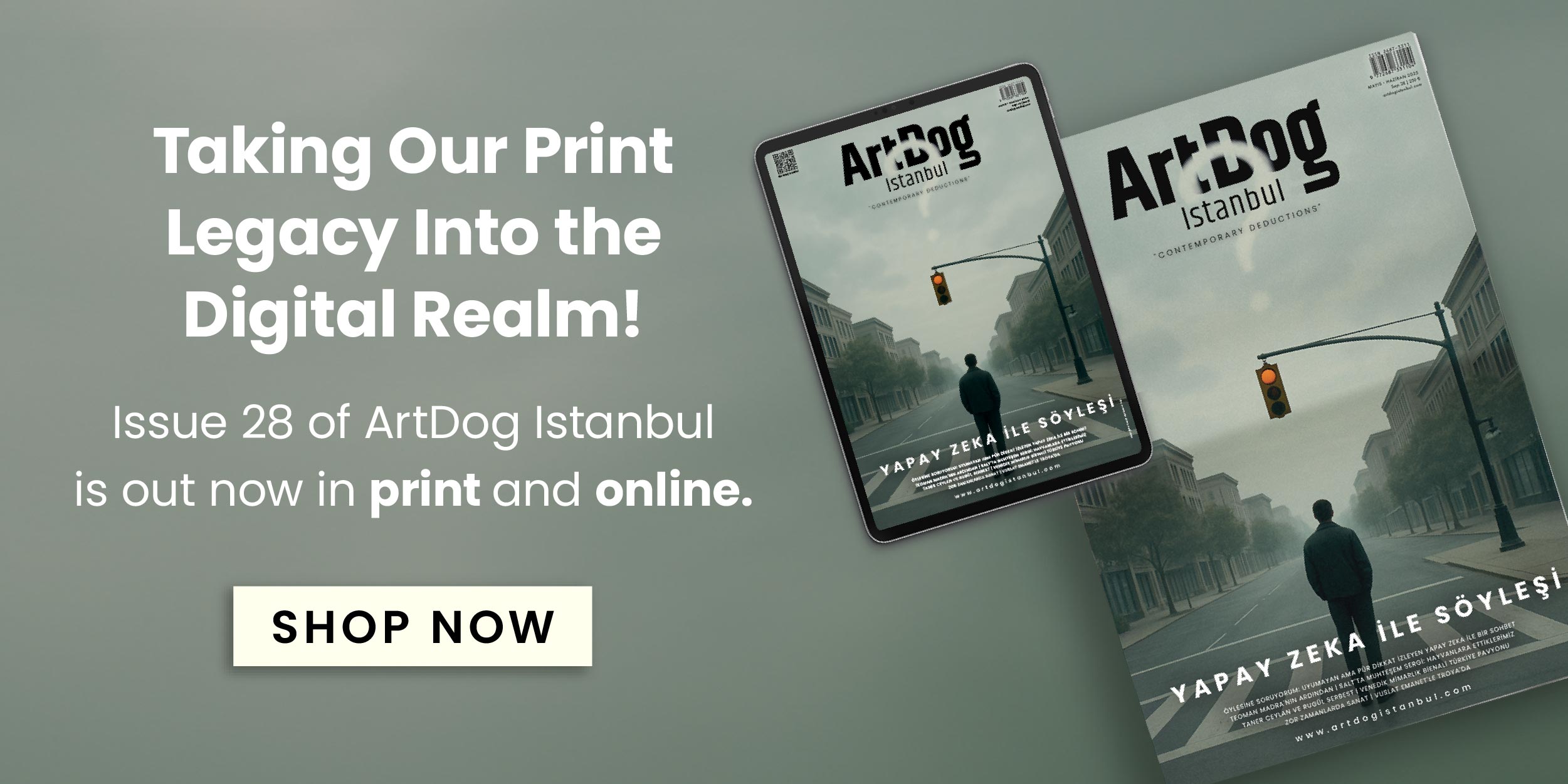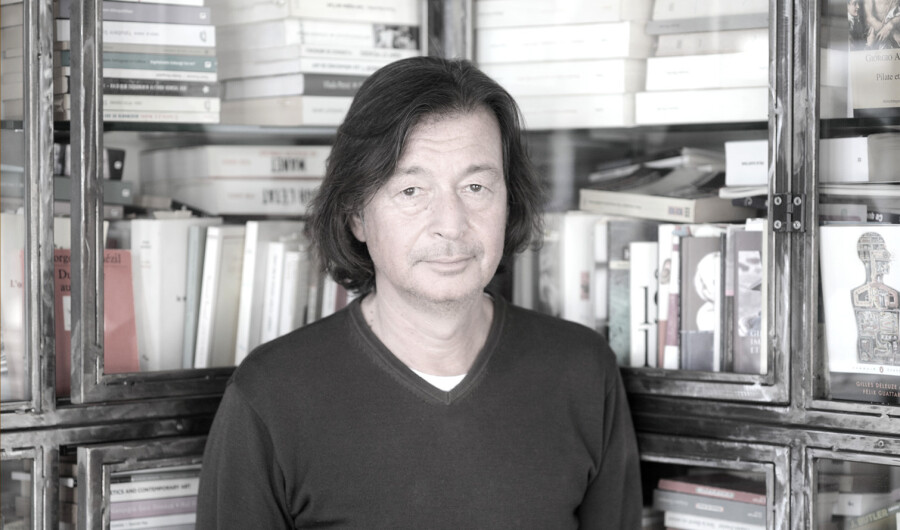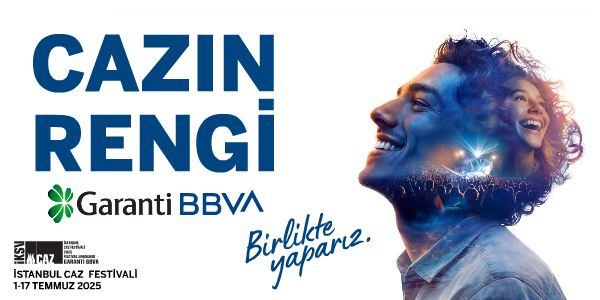The 6th Mardin Biennial, curated by Ali Akay, will take place between May 10 and June 10. Directed by Döne Otyam and Hakan Irmak under the title Further Away, Ali Akay and Döne Otyam speak about the conceptual framework.
ALİ AKAY
The 6th Mardin Biennial meets with the audience under the title Further Away. Could you tell us about the title?
How can we move forward by looking further and further away from the problems we exist with? We live in a wicked world, with wicked problems. Art on the one side, politics and the social sphere on the other side have intersected. This is something I have been claiming for 34 years. Art takes a back seat in this situation and we exist within the sexual, religious, racial, and ethnic identities and their righteous rebellion, and these identities stray far from being social. After the re-emergence of freedoms in Turkey in the 1990s, following disruptions by two separate coups d’état in the 1960s and 1970s, we are now faced with current challenges.Is it possible to go beyond this? Can artistic creation be a vehicle for all this? How can one imagine this gaze, “further away” through the works of artists, looking at Mesopotamia? In the context of postcolonial and feminist, intersectional, decolonial deconstruction of nature, culture (anthropocene and capitalocene), plants, animals, and other humans, ethnicities, nations, classes, and regions, how can we transform the struggle against racism into “coexistence” (existing together)? How can we overcome these problems, without denying any of them and continuously struggling against them, without getting tired and giving up on the fight and envision dreaming further “away”? These are the questions.
When you look at the concept of the biennial, it appears to seek some kind of solution. Do you think art has such a unifying power?
I am someone who believes in such power of art. We are also talking about a field of art, once used as therapy. Art brut (Outsider art/Raw art) explored this: A schizoanalysis that used transversal instead of transference in psychoanalysis, wanted to accomplish this and it can be considered as a success today. But we have forgotten these. The process that started with Tosquelle after World War II and continued with Frantz Fanon, with G. Oury and F. Guattari, took great steps, first starting from Lacan and then deviating further and becoming revolutionary. Today, art and theory are intertwined but not art and therapy. When we look at the experiences of cinema and video, like poetry, literature, and plastic arts, I think we need to have faith in art. Words of Deleuze ring in my ears: “Can cinema bind our faith in the world?” This is the question of the arts, even today.
Does the 6th Mardin Biennial have a specific feature that sets it apart from previous editions?
I did not see all of the biennials in Mardin, but I think there is a much more international group of artists here. Even artists originating from Turkey are coming from abroad. The majority of the artists are from abroad. Likewise, there are 6 lecturers. All of them also come from abroad. This might be a different feature. Moreover, I can say that my 30-old years of curatorial experience and career have given me a vision and I try to carry this approach in all the exhibitions that I have curated. The Sabancı Museum is opening its doors to the Mardin Biennial for the first time, which is a significant difference. Firstly, these are some of the differences. All the works exhibited in eight places are also related to each other.
How do the city and biennial stand together? What do you think the biennial brings to Mardin and to what extent locals of Mardin are involved in the biennial?
As I said at the press conference, I look at Mardin from a cosmic perspective. In this sense, I look at the relationship between the local and the global. On the other hand, I am trying to fill this universal aspect with today’s problems. Each issue I deal with within this concept of ‘Further Away’ goes through this. So my intention is not to display a classical exhibition installation. Even though every issue is significant on its own, it does not seem like one can be unraveled without the other. Therefore, separating the conceptual themes from each other in the setting would not be correct. My approach drives from the idea that all of them are located through each other. If we take each work as a statement, if we think about the juxtaposition of statements, and at the same time realize that they are disjointed, we can perceive each work is in relation with each other. This way of displaying the works creates the conceptual line of the installation within the space. There are not going to be themed groupings as in other exhibitions and biennials, but pieces will be placed so that they can be seen by the visitors as a whole.There is no hierarchy between the works.
How do you see the development of the Mardin Biennial and its position among biennials worldwide?
Biennials are often closely linked to the cities where they are held. Manifesta (European Nomadic Biennial) tried to break this and held its exhibitions in troubled cities. Mardin is a biennial on the rise.
Although Mardin is a magical city, there are limited options for exhibition space. Biennial exhibition spaces are stable. While this stability has the good side of having an established structure, it may also limit the curatorial space for movement. What do you think?
As I mentioned before, the same places will not be used this time. If I am not mistaken, we have used two different places that have never been used before.. After all, the exhibition venues are not easy to handle. In that sense, we may talk about a curatorial difference.
How were the artists chosen for the biennial?
I selected all of the artists myself. I made sure that there was no hierarchy of legitimacy between them. I made a choice outside the structure of today’s biennials.
For the 6th edition, are there any artists producing site-specific works in Mardin?
Yes, there are pieces made directly for Mardin.
What were your priorities when placing the works in the rooms?
I can say that I paid attention to the compatibility of the spaces and the artworks. Rather than establishing the relationship of one work to the work next to it, I emphasize the importance of establishing the relationship of each work to all other works. Perspectives merge with motion and transition.
How are the workshops, performances, and talks organized within the biennial? Some themes are quite remarkable and that I think the city’s people will be interested in. Can you tell us a little bit about the program?
All events , performances, lectures, screenings, sound installations, performative music, etc. are based on the biennial’s conceptual structure. Post-colonialism, refugees, women issues, science fiction, the construction of language, the impact of the plain, nature and the ecosystem, the questioning of history and crimes, the theoretical gaze and creation intertwine with each other. A mindset open to creation goes beyond imitation; as a result a perspective emerges free of repetition. I think it will be very interesting. I think both the artists and the students and professors of Mardin Artuklu University will pay attention. The lecturers are the best in their fields. The former director of the Georges Pompidou Art Center, three famous contemporary philosophers from France, a video and photography theorist, and a sociologist specializing in public space will all give lectures. The public space and its creative process will surely take us “further away”. How can we move beyond repetition? Art has always functioned as “mental production”. The works I consider good art pass through this. Thought, reflection, action, and materials reveal art’s own discourse. An understanding of art that is open to the outside without abandoning itself passes through the conceptual framework of the biennial.
DÖNE OTYAM
What do you think of the development of the Mardin Biennial?
The 15-year process has not been easy. We still have logistical and technical difficulties. Transforming spaces is the most tiring part. However, we have become a great team and now we have the infra-structure to solve these difficulties easily. Mardin and the Biennial have contributed a lot to each other. It continues to do so. It is an event that mobilizes the city and is highly anticipated. There are almost 30 parallel exhibitions in this edition. In the 6th edition, there are almost 300 international artists and nearly 550 works. It is a biennial that is still in the process of developing, such as becoming a member of the International Biennial Association.
How were the locations chosen this year?
The locations were selected based on our curator Ali Akay’s concept and the artists’ wishes. In addition to the German Headquarters, which we have used in several biennials, we added Develi Han in the 5th edition. This time, locations such as Dabakoğlu House and Caravanserai were added.
How do you think public perception and integration of the biennial have changed over the years?
Contemporary art in Turkey unfortunately only appeals to a specific segment of the population.. In Mardin, as in all cities, it attracts the attention of art enthusiasts. The area where the biennial takes place is a historical area and spaces that we define as a protected area, and the people who live here, the craftspeople, hotels, and businesses are more involved. There is a great deal of preparation for the biennial. Art institutions, relevant departments of universities, and non-governmental organizations working in the field of art participate significantly.
How has the interest of the mostly Istanbul-based art market in the Mardin Biennial developed over the years?
I think it’s a good story. There was a large majority of people who had never seen Mardin. The interest in the first biennial and the last three biennials is, of course, very different. Now everyone is doing their own organization, they don’t ask for our help because they know Mardin very well. The increase in tours is also incredible.
It has been 14 years since the first one. Organizing biennials in relatively small cities is a difficult task both in terms of logistics and funding. Could you tell us a little bit about the difficulties you’ve experienced or the moments when you said “I’m glad we are doing this”?
It’s really hard. The difficulties never end. It is always challenging to transform historic sites, let alone clean them up. There is also tourism. That part is also very tiring. We also have a lot of difficulties in terms of funding. We believe that the collaboration that we have started with the Hitay Foundation during this biennial will be an important contribution to a sustainable biennial, sustainable funding, and sustainable human resources. In 2025, we want to establish the Mardin Biennial Foundation and further develop our institutional structure. The moments that make me say I am glad we are doing this job defeat any difficulty and make me forget. For example, the exhibitions opened by young artists, which started with the 3rd biennial, is very important. I am incredibly happy. This edition will have almost 30 exhibitions with artists from Mardin and outside…









